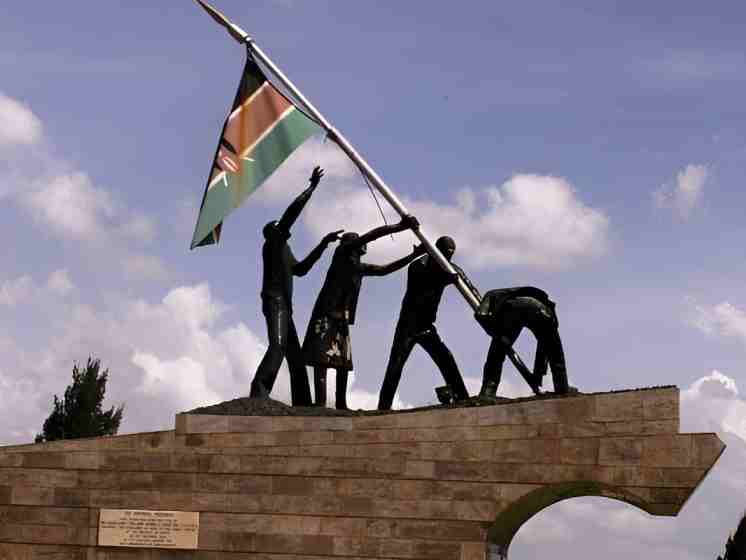On the morning of June 1, 1963, Jomo Kenyatta stood on the steps of what is now Harambee House and was sworn in as Kenya’s first Prime Minister by Governor Malcolm MacDonald.
Dressed in a traditional beaded cap and holding a fly-whisk, Kenyatta embodied the hope of a nation finally gaining self-rule.
Outside, a crowd of 30,000 people danced along Coronation Street—now Harambee Avenue—celebrating the end of colonial rule. That day, known as Madaraka Day, marked the beginning of internal self-governance and Kenya’s journey toward independence.
But even as Kenyatta took power from the colonial administration, deeper challenges were beginning to emerge.
The country was divided by tribal loyalties and political competition, and the new leaders had to build a nation out of a deeply fragmented society.
Kenyatta was soon confronted by rising tensions within his own party and between competing political groups.
His closest ally, Oginga Odinga, later wrote that Britain interfered with the pre-Madaraka coalition and pressured Kenyatta to sideline him.
"The country was angry. It felt that my exclusion was a betrayal of the struggle," Odinga said. Kenyatta responded that Odinga would lead the party, but he faced opposition from within Kanu itself.
Madaraka came just after a major victory for Kanu in the May 1963 elections, where it won 58 seats in the House of Representatives against Kadu’s 28.
But even with the win, Paul Ngei formed an ethnic-based party, the African People’s Party, in a move to strengthen his grip over politics in Ukambani. It was a signal that ethnic loyalties would remain central to Kenya’s political life.
Kenyatta’s government promised to heal colonial wounds and unite the country. "Kenya is not going to be another Congo," he declared, reassuring white settlers that they would be treated equally.
"He will have the right to own property. He will be equal to every other citizen."
But early cracks were visible. Kadu, which supported regional governments under the Majimbo system, hoped to protect its influence in areas like the Rift Valley and the Coast.
Kenyatta and his team viewed this as an attempt to block independence and weaken the central government. Lacking money and capacity, the regional governments quickly failed, allowing Kenyatta to push for a centralised state.
Through his ally Tom Mboya, Kenyatta began absorbing opposition figures from Kadu into government. One by one, defectors crossed over.
Martin Shikuku was the last, and by 1964 Kenya had become a one-party state in practice.
The strategy of weakening opponents through appointments and labelling them tribalist would become a standard tactic for future governments.
Even dissent within Kanu was not spared. Odinga’s left-leaning views clashed with Kenyatta’s Western-friendly leadership. The state painted Odinga as a radical and gradually pushed him out, showing early signs of the suppression of political opposition.
Although Kenya did not formally outlaw other parties until 1982, Kenyatta’s rule had already established one-party dominance.
That model survived for decades. Mwai Kibaki’s rise in 2002 broke Kanu’s long rule, but he, too, struggled with a system shaped by elite interests and ethnic divisions.
Now, 63 years after that historic morning, Kenya continues to wrestle with the same issues—how to unite a divided country, manage politics without tribalism, and fulfill the promise that came with Madaraka.

